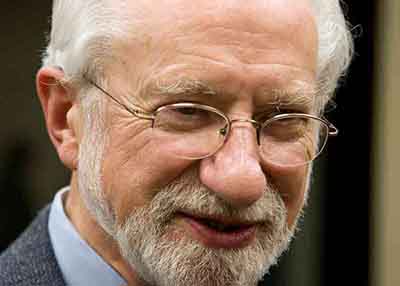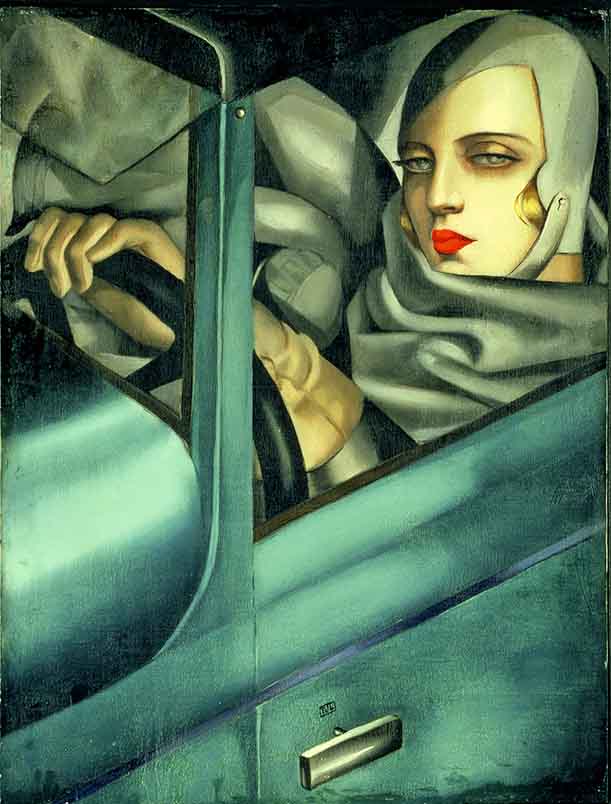We like to come back and experience things again. But we also like to tell familiar film stories in new ways, even though sometimes it is difficult to get used to them. Like the British to new versions of Hamlet or subsequent film adaptations of Agatha Christie's novels.
A medicine man for human souls
On September 27, Netflix introduced Znachor (pol. Quack; English title: Forgotten Love) directed by Michał Gazda to its television offer. "Dołęga-Mostowicz's novel and its film adaptation from 40 years ago are - without any exaggeration - a legend of Polish pop culture," says the director, "which was undoubtedly a great directorial privilege, but also - let's be honest - a creative concern. We were playing with the national pattern of melodrama."
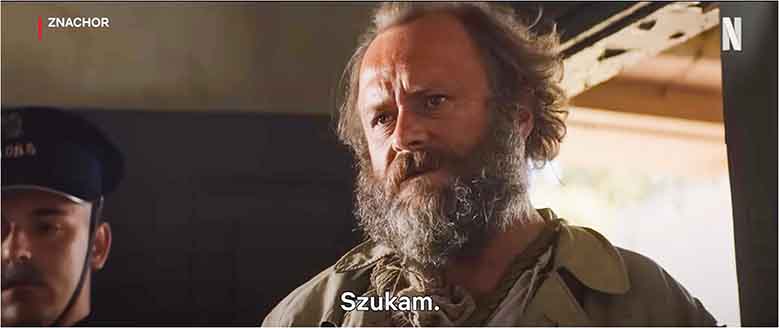
A frame from the trailer of Znachor (Source: YouTube)
Viewers' expectations towards this film adaptation are quite divergent. Some are happy that a beloved story from their childhood or youth will be told in a new language - for a new generation. Others joke that since Netflix is the producer, a global company, Professor Wilczur should be played by a black actor. And the count's wedding to the poor girl might not have taken place because the count would have turned out to be gay in the finale. After watching the trailer, mockers alluded to the final scene of the film: "Your Honor, this is not Professor Rafał Wilczur!"
This is the third film adaptation of this novel by Tadeusz Dołęga-Mostowicz. In the first one, from 1937, Professor Rafał Wilczur was played by Kazimierz Junosza-Stępowski. In the 1982 film adaptation by Jerzy Hoffman, Wilczur-Kosiba was played by Jerzy Bińczycki. In the latest adaptation, this role was entrusted to Leszek Lichota (46), known from the TV series Wataha and the film Boże Ciało. "I am from the generation that grew up on the story of Professor Wilczur," the actor emphasizes. "This story has been showing for generations that thanks to the steadfastness of the human heart, humility and the willingness to seek the truth, fate can always turn around." Artur Barciś will also appear in the cast - in Hoffman's film, the miller's son cured by a medicine man, here in a cameo role as a butler.
Let's recall the plot of the story. Two fates that are intertwined in one person. Professor Rafał Wilczur is firmly rooted in life. An outstanding surgeon, happily married, loving father of a charming daughter. Wealthy. He has just finished a difficult operation and is rushing home (with a beautiful fur coat!) for his wife's name day. Instead, he finds a farewell letter. She left, taking their daughter, and asked him not to look for her. It's a bolt from the blue. To ease the pain, he goes to get drunk at some random cab drivers' pub. However, he unnecessarily shows that his wallet is full. This costs him a severe blow to the head, the robbery of everything he had with him (including documents), and amnesia.
And the second fate. An elderly man who doesn't know who he is wanders aimlessly. He is detained time and time again - as an anonymous person – for vagrancy. At least until he steals the deceased's papers under the name Antoni Kosiba. While wandering around the Borderlands, one day he comes to a mill outside the village. And here the looping of the situation will bring these two fates back together.
This adaptation will probably be watched - like the previous ones - in a smooth manner, because it is based on a novel that "reads itself". Znachor (1936) was a response to the troubled times of the Great Depression. People lost their position and property. They often became beggars overnight. Literary scholars classify novels such as Znachor as "mystery novels". An important role here is played by deciphering the secrets of the past: family secrets, hidden crimes, financial embezzlement, and the like. The main plot is the struggle of a noble character with wicked people who stood in his way. Hence, people often pretend to be someone they are not, as well as stage attacks, fights and escapes. The second, no less important theme is love. However, the hero fighting against adversities is usually the protector and patron of lovers. He has the disposition for this because he dominates his surroundings with intelligence, knowledge, and often physical strength.
Jagna pretty as a picture, or "Peasants"
Also this fall, on October 13, another new version of the old classic was released in cinemas, i.e. the film adaptation of Stanisław Reymont's Peasants. Behind the film is a duo of screenwriters and directors - DK Welchman and Hugh Welchman.
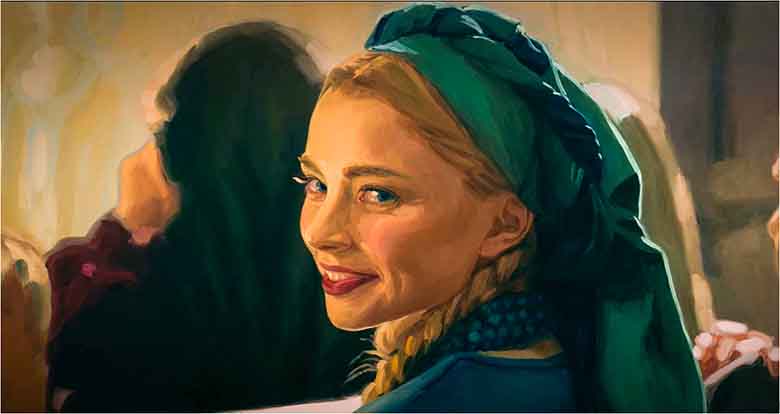
A frame from the trailer of Chłopi (Source: YouTube)
The movie, lasting almost two hours, was created using the painting animation technique. What is it all about? First, shooting of a realistic film with actors takes place for a month. Then, each of the approximately eighty thousand frames of the film is hand-colored by a team of seventy "painters" who have been practicing this unique technique for three weeks. They came from Poland, Serbia, Ukraine and Lithuania, and the coloring took them over fifteen months. 1,300 liters of Cobra oil paints were used for this process. These dissolve easily in water, thanks to which we obtain a watercolor effect on the screen. To make the image smoother, a separate group of animators created intermediate frames. The creators of Peasants had already mastered this technique when making the film Loving Vincent (2017), in which the characters in Vincent van Gogh's paintings presented the last fragment of his biography and tried to reveal the mystery of artist's death.
The eye must get used to seeing an image in this format. Viewers who have encountered it while watching Loving Vincent are sometimes skeptical: "I appreciate the work of the animators, but in my opinion this style is simply illegible and too abstract . The characters blend into the background, everything moves, you don't know where to direct your eyes. A bit like looking at fractals," we read in one of the comments. Others, in turn, reveal enthusiasm: "I could watch many more films in this form. I can't wait for Peasants." After watching the trailer, viewers also had specific comments: "This Jagna from the film is more in line with today's canon of female beauty. She should be thicker, «like a stove»."
Jagna and Antek, the young generation of heroes, were played by Kamila Urzędowska and Robert Gulaczyk. We see Mirosław Baka in the role of Boryna, and Ewa Kasprzyk as Dominikowa, Jagna's mother. The organist's face was provided by Małgorzata Kożuchowska, and the old Jagustynka, a village beggar expelled from her home by her children, is played by Dorota Stalińska.
Musical background for the entire story, by Łukasz L.U.C. Rostkowski, was performed by a specially selected collective of Slavic folk musicians. Using traditional folk instruments and singing, they attuned the musical background to the visions taken from the paintings of Józef Chełmoński, Ferdynand Ruszczyc, Leon Wyczółkowski and Jacek Malczewski.
In this adaptation, the emphasis was placed on the female side of the story from Reymont's Lipce. "After years of working on a film about Vincent van Gogh, I felt a strong need to talk about women: their struggles, passion and strength," says the author of the script. Women will be at the center of the events, with Jagna, a village beauty, at the forefront. Her selfless love and passion will collide with the strict rules of rural life, which determine everyone's social position, scope of privileges and responsibilities. Going beyond these narrow frameworks results in stigmatization, humiliation and rejection.
Ada, this is not appropriate! Or "Mr. Kleks' Academy"
The premiere of the first part of Mr. Kleks' Academy directed by Maciej Kawulski has been announced for January next year. This time, Mr. Kleks will be played by Tomasz Kot. Piotr Fronczewski, who played the hero of Jan Brzechwa's book six times, will now play the role of the Doctor. During the ceremonial start of filming, the actor symbolically passed the baton to his successor.
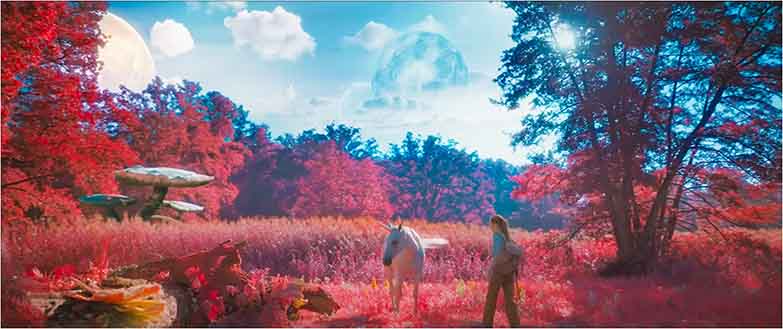
Still from the trailer of Mr. Kleks' Academy (Source: YouTube)
Kot is partnered by Antonina Litwiniak, making her debut on the big screen, as Ada Niezgódka - the modern equivalent of Adaś Niezgódka. Each of them feels the burden of responsibility in their own way.
“It is a huge challenge, and when you face the challenge, you know that you are alive. It's also a huge honor for me, because in my mind Piotr Fronczewski is absolutely the most fantastic Kleks, so I also feel pressure," says Tomasz Kot.
“I feel all the emotions at once, especially excitement, because acting has always been my dream. So what I'm doing now and the way we're creating this project is a fulfillment," adds Antonina Litwiniak, who plays Ada Niezgódka.
The Academy... tells the story of a seemingly ordinary girl - Ada Niezgódka - who goes to the titular Academy to discover the world of fairy tales, imagination and creativity. With the help of an outstanding and crazy teacher, Professor Ambroży Kleks, she develops her amazing skills and also finds a clue that will help her unravel the biggest family mystery.
This time, Mr. Kleks' Academy will be an international school where children from all over the world will study. “We are making a film for children, we do not encourage schools to go to cinemas because it is a required reading material. We want them to watch it two or three times because it's great entertainment," says the film's director and producer Maciej Kawulski.
Except that it was Ada, instead of Adaś from the first film, who caused the most complaints from Internet users. They believe that a boy's education replaced by a girl's education, which usually follows a different track, will distort the whole story. Sometimes there is open mockery: "Why a white girl and not a black, non-heteronormative person with slanted eyes?" There are also retail demands: "And where is Mr. Kleks's beard that can be magnetized to act as a compass? Where are the freckles?"
The film is promoted by an exceptionally beautiful song I am your fairy tale performed by Sanah, which illustrates the trailer shimmering with fairy-tale colors. But there are also complaints: "This modern, club style in the fairy tale about Mr. Kleks? No. It absolutely doesn't fit with what this beautiful story is about."
Paweł and Gaweł, Cześnik and Rejent, Pawlak and Kargul…
Artur Żmijewski announces the premiere of the film Sami swoi. The Beginning for next year. This time, as a director, although his day job is still Father Mateusz, he will show the fate of the Pawlaks and Karguls before their resettlement from the Borderlands to the Recovered Territories.
The very idea caused quite a stir. The prevailing opinion was that "one should not touch such sacred films" because nothing would compare to the original. "Even though it will be well written and acted, I think that the main criticism will be the lack of the atmosphere of old cinema," we read in Internet users' comments. In general, viewers are full of bad forebodings, expressing hope that "Żmijewski knows what he has gotten himself into and will bear the burden of production." They also wonder whether the film will contain echoes of the Volhynia massacre and the repression of the Soviet occupier. These two issues - for obvious reasons - were completely silent in the 1967 film. More impulsive Internet users suggest that Artur Żmijewski fell off his bike while filming the series, hit his head on the cobblestones in Sandomierz, and at that moment he came up with the idea to film Sami swoi. And it is not entirely clear whether the film adaptation will be the result of the trauma, or an artistic revelation.
In this situation, the creators explain, explain, explain... "I want to make a film that will be understandable to a modern viewer," explains Artur Żmijewski. "I want it to be a completely new, universal story about us - as we are every day, with all our advantages and disadvantages." “Everyone asks us two questions alternately: Why? What for?" – sums up the film's producer, Tomasz Kubski. “The answer is very simple: in fact, the trilogy is incomplete without the part we are currently producing. Poorer due to the world in which Pawlak fell in love for the first time, had his heart broken for the first time, and fought for himself for the first time.
The roles of young Kargul and Pawlak will be played by Karol Dziuba and Adam Bobik, both in their early thirties. The older generation will be presented by: Zbigniew Zamachowski, Mirosław Baka, Anna Dymna, Adam Ferency, Janusz Chabior and Wojciech Malajkat. Dymna, who played Ania Pawlakówna in the films Nie ma mocnych and Kochaj albo rzuć, plays Ania's uncle here. "When Ania is born in Nie ma mocnych," the actress comments, "she will be like her aunt, and that will be very nice."
For the younger ones, let's remind the plot of the film from 1967. The Pawlaks are repatriates from the village of Krużewniki in the Borderlands. After the war, they go to the Western Territories. They settle in a former German farm, which, through a fence, neighbors the Karguls who arrived earlier, eternal enemies of the Pawlaks. But they are also happy that at least they will have their own enemies on foreign soil. On this occasion, they make an epoch-making reconciliation. But given their temperaments, it's only a short truce. Only the next generation will be able to forget the traumas of the past.
This immortal story seems very forward-looking. In Poland, the surname Pawlak is quite popular - about 65,000 people have it. The surname Kargul is less common - about 2,100 people have it. But these are approximate data: after all, new Pawlaks and Karguls are constantly born and die.
Let's hope that the creators will emerge unscathed from these duels with film legends. After all, as the Americans say, every generation must have its own King Kong.
Translation from Polish by Andrew Woźniewicz.





